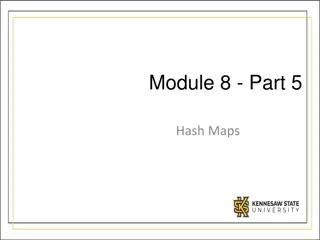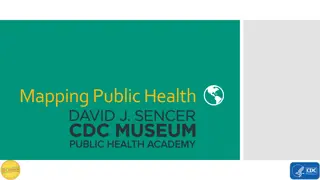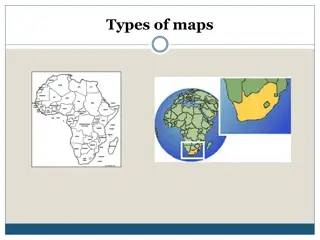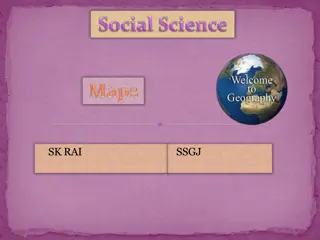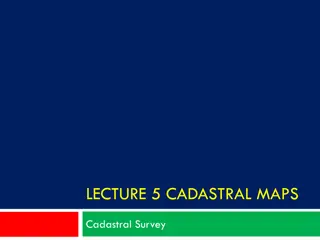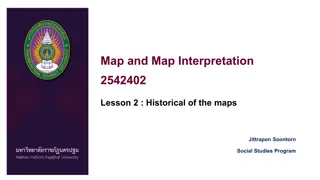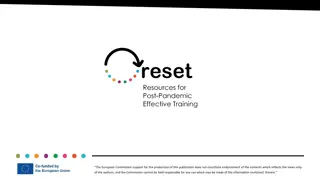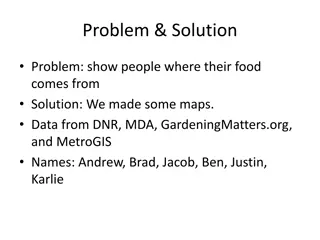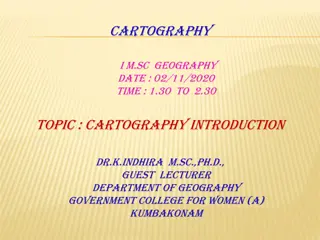
Concept Maps in Nursing Education by Karen Thies
Explore the concept of concept maps in nursing education through visual diagrams that organize knowledge in a structured way. Understand how concept maps aid in making students' mental processes visible, enhancing critical thinking awareness. Dive into a patient case study utilizing a concept map to assess health history, medications, comorbidities, primary diagnosis, labs, pathophysiology, and nursing diagnoses with interventions.
Download Presentation

Please find below an Image/Link to download the presentation.
The content on the website is provided AS IS for your information and personal use only. It may not be sold, licensed, or shared on other websites without obtaining consent from the author. If you encounter any issues during the download, it is possible that the publisher has removed the file from their server.
You are allowed to download the files provided on this website for personal or commercial use, subject to the condition that they are used lawfully. All files are the property of their respective owners.
The content on the website is provided AS IS for your information and personal use only. It may not be sold, licensed, or shared on other websites without obtaining consent from the author.
E N D
Presentation Transcript
CONCEPT MAPS in NURSING EDUCATION KAREN THIES, DNP, RN
WHAT IS A CONCEPT MAP? A concept map is a visual diagram that organizes knowledge in an orderly, hierarchical, structured, visual way. 1,2 Concept maps help make the student s mental processes visible helping the student to become aware of their critical thinking and processes. 3
Concept Map Patient s Health History Medications Comorbidities Primary Diagnosis Labs Pathophysiology 3 Nursing Diagnoses & Interventions Assessment
Pt. JS. 89 y.o. male. Presented at ER with S.O.B. JS smoked cigarettes for 50 years before quitting. Said he had not been able to sleep lying down because he could not breathe. JS does not get much physical activity and is obese. His father died of a heart attack years ago and his mother is living with his sister, but is confused. Medications: Digoxin xx mg, daily Lasix xx mg, twice a day K+ xx mg daily Metoprolol xx mg, daily Montelukast ** daily Fluticasone ** daily Hx of hypertension, hyperlipidemia, asthma, prostate cancer Patient: JS DX: Heart Failure Heart Failure: a medical condition where the heart is damaged and unable to provide sufficient blood flow to meet metabolic requirements or systemic venous return. Cause: injury to the myocardium. Clinical onset = advanced stage of the disease. 4,5 Labs on 09Jan: Hgb ** Hct ** LFT s ** K+ ** Na+ ** CL ** Ca** BUN ** Creat Cl ** ND#1: Imbalanced nutrition-more than body requirements. a. Provide small, balanced meals for pt. 3x/day. ND#2: Decreased cardiac output r/t disease process a. Administer medications to improve heart contractions. b. Monitor VS every 4 hours. ND#3: Fatigue secondary to lack of sleep r/t disease process. a. Ensure pt. has rest periods throughout the day, free of visitors and tests. Nursing Assessment: VS- BP 160/90, P 99, T 36, RR 18; Skin color-pale; lung sounds-moist in all lobes, gurgling present; Bilat LE s swollen, Bowel tones present x 4
References 1. Novak, J. (1991). Clarify with concept maps: A tool for students and teachers alike. The Science Teacher, 58(7), 44 49. 2. Novak, J. D. (2004). Concept maps and how to use them. Insight, 6(2), 15-16. doi:10.1002/inst.20046215 3. Paucard-Dupont, S., & Marchand, C. (2014). Exploratory study of clinical reasoning in nursing students with concept mapping [Abstract]. Recherche En Soins Infirmiers, (117), 85. 4. Chiariello M1, & Perrone-Filardi P. (1999). Pathophysiology of heart failure. Miner Electrolyte Metab. Jan-Apr;25(1-2):6-10. 5. Clinton D.Kemp, & John V.Conte. (2011). The Pathophysiology of heart failure. Cardiovascular Pathology. Volume 21, Issue 5, Sept-Oct 2012,365-371

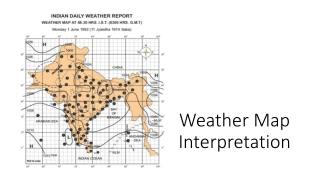
![❤Book⚡[PDF]✔ Star Maps: History, Artistry, and Cartography (Springer Praxis Book](/thumb/21625/book-pdf-star-maps-history-artistry-and-cartography-springer-praxis-book.jpg)
